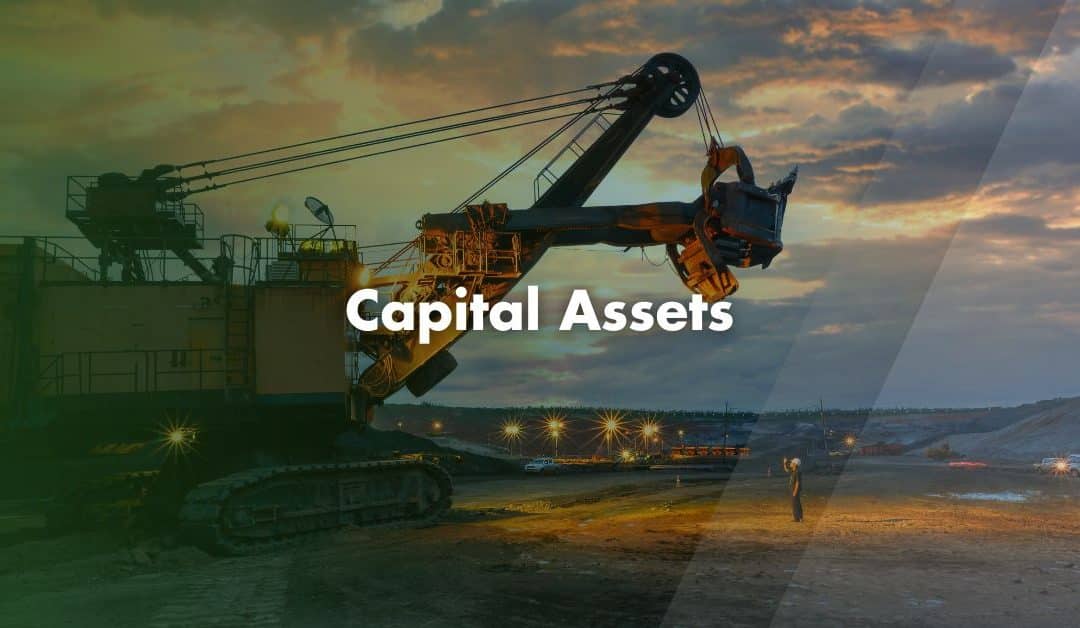Every business relies on equipment, tools or property to some degree. Some of these assets are short-term expenses, while others serve a long-term purpose. These long term assets, known as Capital Assets, help with business growth and financial planning.
What are Capital Assets?
A capital asset is a long-term investment that a business keeps for more than a year. These assets help with business operations and contribute directly to generating profit. Unlike inventory, which businesses buy to resell quickly, Capital Assets remain useful for an extended period.
Assets include:
- Real property
- Land
- Vehicles
- Computer equipment
- Machinery
The classification of an asset depends on the business size. A small company might consider a tablet a Capital Asset, while a larger corporation may classify it as a routine office expense.
Types of Capital Assets
There are 2 main types of Capital Assets: Tangible and Intangible.
- Tangible assets are physical items (such as buildings, machinery and vehicles) that a business owns and uses regularly.
- Intangible assets do not have a physical form (such as trademarks, patents and copyrights) but still hold value.
A Hire Purchase Agreement allows a business to rent an asset for a long period, often with the option to buy it at the end of the agreement. This makes it function similarly to a Capital Asset.
While land and buildings are tangible assets, they do not qualify for “Plant and Machinery” Capital Allowances. However, businesses may claim the Structures and Buildings Allowance for qualifying expenditures on commercial buildings and structures.
How to Record Capital Assets?
Businesses must track Capital Assets on their Balance Sheets. Since these assets lose value over time, companies use Depreciation to account for this decline. A simple accounting method to calculate depreciation is to divide the asset’s cost by its useful lifespan. Each year, businesses must record this depreciation in their financial statements.
However, business obtain tax relief through Capital Allowances, which may involve different calculations, such as Writing Down Allowances at specific rates.
How Capital Assets Affect Business Taxes
HMRC does not allow depreciation as a deductible expense. However, businesses can claim tax relief through Capital Allowances.
Capital Allowances provide tax relief on business assets. The Annual Investment Allowance (AIA) scheme allows businesses to deduct up to £1,000,000 of qualifying purchases from their taxable profits. However, not all assets qualify, as HMRC excludes company cars due to their mixed personal and business use.
Businesses may also benefit from a 100% First-Year Allowance, which lets them deduct the full cost of qualifying assets in the year of purchase. Additionally, companies subject to Corporation Tax can claim Full Expensing, allowing a 100% deduction on most new plant and machinery purchases.
Buying and Selling Capital Assets
If a business uses the VAT Flat Rate Scheme (FRS), it generally cannot reclaim VAT on purchases. However, High-Value Capital Assets (HVCA) costing £2,000 or more qualify for VAT recovery. Whatever the case, businesses must account for VAT correctly.
When selling a Capital Asset, if VAT was reclaimed at the time of purchases, the business must charge VAT on the sale. If VAT was not reclaimed, the sale may be exempt. However, this can vary depending on the asset and circumstances.
Contact Us
We are not just accountants; we are Chartered Accountants with one of the most reputable and premium accounting bodies. We are registered and regulated by ACCA; so you can rest assured that you are in good hands. Knowing this, don’t hesitate to get in touch with us if you require assistance: Pi Accountancy | Contact Us
This article is for general informational purposes only and does not constitute legal or financial advice. While we aim to keep our content up to date and accurate, UK tax laws and regulations are subject to change. Please speak to an accountant or tax professional for advice tailored to your individual circumstances. Pi Accountancy accepts no responsibility for any issues arising from reliance on the information provided.

